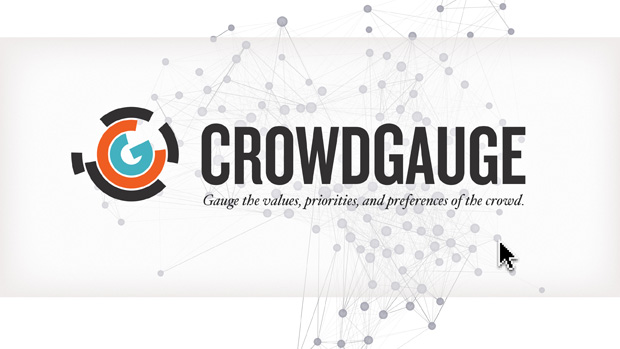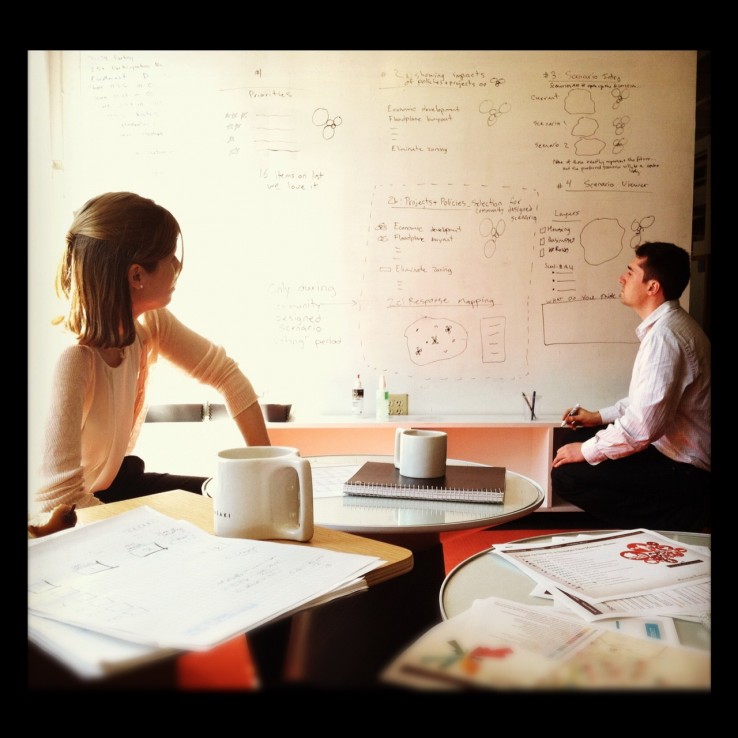Gauge the values, priorities and preferences of the crowd.
Web-based technology can help planners promote literacy about planning issues and increase public engagement. We already deploy sophisticated data analysis and modeling tools, but many of these tools are more suitable for back-of-house number crunching than for interactive public engagement. This divide between tools for technicians and tools for engagement is significant: despite all of the public- and client-facing communication work we do, few of today’s data modeling or scenario planning tools were built to be inviting to lay audiences. We need to apply our technological design prowess to facilitating interaction and better engaging the very people our work supports.
Faced with the challenge of engaging people across a spread-out region, Sasaki, PlaceMatters, and the Des Moines Area Metropolitan Planning Organization (DMAMPO) partnered to build a new tool—called CrowdGauge—to help communities achieve better public participation and understanding of trade-offs. CrowdGauge is an open-source framework for creating educational online games. It first asks users to rank a set of priorities, then demonstrates how a series of actions and policies might impact those priorities. The third part of the sequence gives users a limited number of coins, asking them to put that money towards the actions they support most.
We first developed the platform in partnership with the Des Moines Area MPO (DMAMPO) as part of The Tomorrow Plan, a regional plan for sustainable development in the Central Iowa region. The original game, named DesignMyDSM, can be played at designmydsm.thetomorrowplan.com. The study region included 480,000 residents, 17 cities, approximately 540 square miles, and parts of four counties—requiring an outreach strategy that went beyond in-person open houses and workshops. DesignMyDSM captured over 1000 unique users in the region, and was especially effective in the under-40 demographics who typically would not have participated in a traditional community engagement process.
CrowdGauge is entirely open-source and available under the permissive MIT license. Currently, Sasaki is preparing to apply the CrowdGauge platform to the Northeast Ohio Sustainable Communities Consortium Initiative (NEOSCC) in spring 2013, and Denver-based PlaceMatters is beta testing the software for use on other HUD-funded regional planning projects.
As web-based technologies grow in both functionality and beauty, planners have the opportunity to create new places for people to enjoy expressing ideas, solving problems, and realizing goals. Most importantly for planners, web technologies offer the opportunity to help ask interesting questions and confront tradeoffs. Visual design, information architecture, and usability are increasingly important to match the strength of our technical muscle with the complexity of the human experience—which means designing with clarity and user experience in mind.
In the spirit of open source, we are pleased to share this front-end tool with the planning community. We are excited to see the clever applications and brilliant new iterations we will all build next.
Credits for information and photo/graphics:
Sarah Madden, Sasaki
smadden@sasaki.com
crowdgauge.org
designmydsm.thetomorrowplan.com




